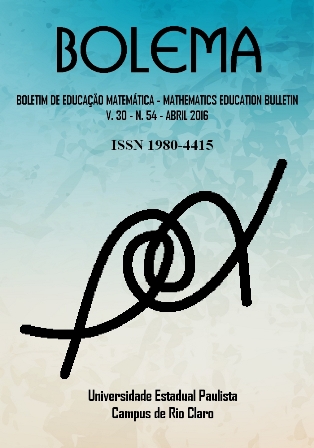Transitioning from “It Looks Like” to “It Has To Be” in Geometrical Workspaces: affect and near-to-me attention
Palabras clave:
Geometría. Espacio de Trabajo Geométrico. Arriba-abajo Atención. Afecto. Investigación práctica.Resumen
Within a practitioner researcher framework, this paper draws on a particular mathematics education theory and aspects of neuroscience to show that, from a learner’s perspective, moving to a deductive reasoning style appropriate to basic Euclidean geometry, can be facilitated, or impeded, by emotion and/or directed attention. This shows that the issue of a person’s deductive reasoning is not a merely cognitive one, but can involve affective aspects related to perception – particularly perception of nearby sense data – and emotion. The mathematics education theory that has been used is that of the Espace de Travail Mathématique, the English translation of which is known as Mathematical Working Spaces (MWS). The aspects of neuroscience that have been used pertain to the distinct processing streams known as top-down and bottom-up attention. The practitioner research perspective is aligned with Mason’s teaching-practice-based ‘noticing’; qualitative data analysed in this report include individual interviews with school teachers on in-service courses and reflective notes from teaching. Basic Euclidean geometry is used as the medium for investigating transition from ‘it looks like’ to a reasoned ‘it has to be’.Descargas
Publicado
2016-04-17
Número
Sección
ARTIGOS
Licencia

>>>>> BOLEMA: Mathematics Education Bulletin = BOLEMA: Boletim de Educação Matemática, Rio Claro, SP, Brasil - eISSN 1980-4415 - está licenciado sob Licença Creative Commons


